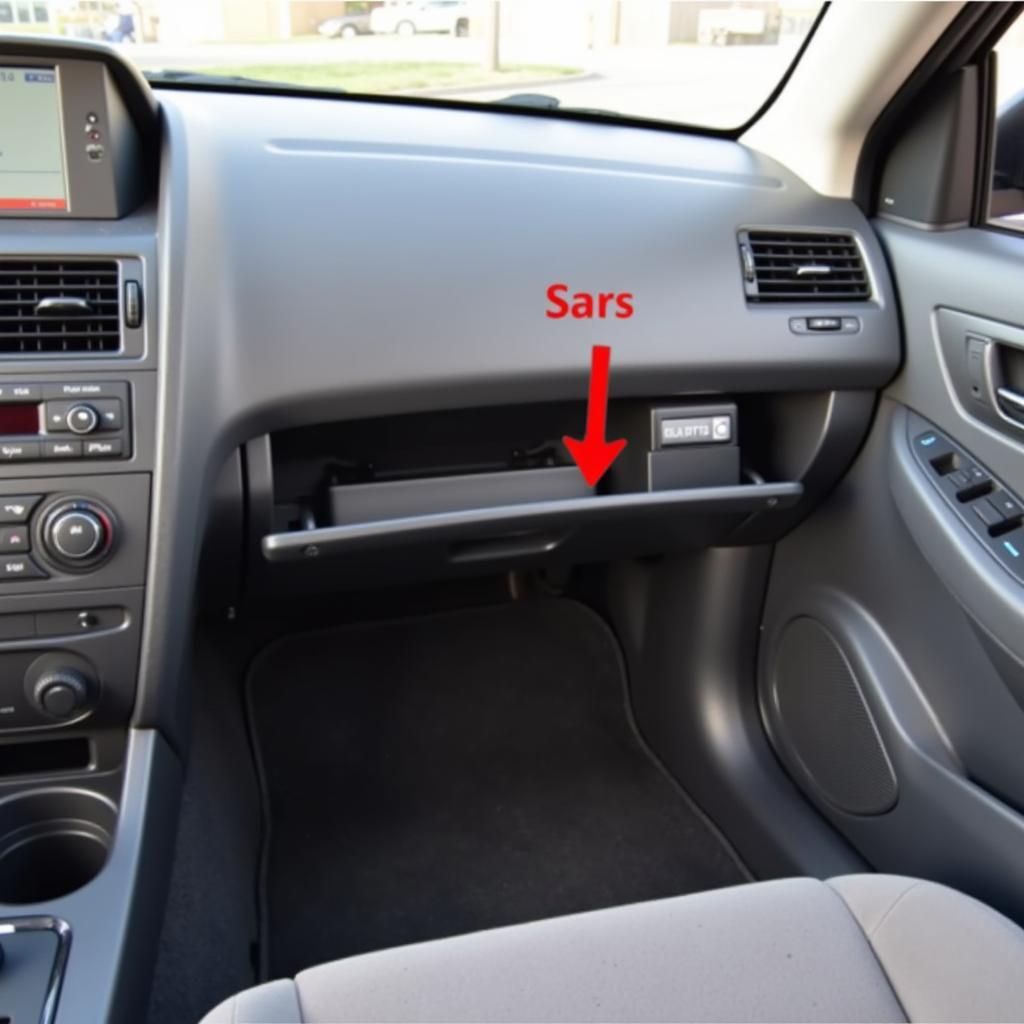Choosing the right car diagnostic tool can feel overwhelming, especially with the wide variety of options available. You need a tool that not only reads your car’s specific codes but also provides the depth of information you need to make informed repairs. The key question is: how do you know if a diagnostic tool supports your car? This guide will walk you through the essential factors to consider, ensuring you invest in a tool that fits your needs and gets you back on the road faster.
Understanding Your Car’s Diagnostic System
Before diving into the world of diagnostic tools, it’s crucial to understand the basics of your car’s diagnostic system. Most modern vehicles (manufactured after 1996 in the US) come equipped with an OBD-II port, typically located under the dashboard on the driver’s side. This port is the gateway for diagnostic tools to communicate with your car’s computer and retrieve valuable information.
 Car OBD-II Port Location
Car OBD-II Port Location
Essential Factors for Diagnostic Tool Compatibility
To determine if a diagnostic tool is compatible with your car, consider the following factors:
1. OBD-II Protocol Compatibility
While most modern cars use the OBD-II standard, there are subtle variations in communication protocols used by different manufacturers. Before purchasing a tool, ensure it explicitly states compatibility with your car’s make, model, and year.
 Car Diagnostic Tool Compatibility Chart
Car Diagnostic Tool Compatibility Chart
2. Diagnostic Depth and Features
Diagnostic tools offer a range of functionalities, from basic code reading to advanced live data streaming. Determine your needs – are you a DIYer looking for basic troubleshooting, or a professional requiring in-depth analysis?
- Basic Code Readers: These entry-level tools retrieve and clear basic diagnostic trouble codes (DTCs).
- Mid-Range Scanners: Offer more advanced features, such as live data streaming, freeze frame data, and some bi-directional control capabilities.
- Professional-Grade Scanners: Provide comprehensive diagnostics, including module-specific coding, programming, and access to manufacturer-specific systems.
3. Software Updates and Support
Automotive technology evolves rapidly. Choose a diagnostic tool from a reputable manufacturer that provides regular software updates to ensure compatibility with the latest vehicle models and technologies.
“Investing in a quality diagnostic tool with ongoing software support is crucial for any mechanic. It’s like having an updated medical encyclopedia—ensures you’re working with the most accurate information.” – John Miller, ASE Certified Master Technician
Beyond Basic Compatibility
While the above factors address the core compatibility aspects, consider these additional points for a comprehensive assessment:
- Wireless Connectivity: Bluetooth or Wi-Fi enabled tools offer greater flexibility and convenience.
- User Interface and Ease of Use: An intuitive interface and user-friendly software are essential for efficient diagnostics.
- Multilingual Support: Important if you require the tool to display information in a language other than English.
 Car Diagnostic Tool Features
Car Diagnostic Tool Features
Conclusion
Choosing the right car diagnostic tool doesn’t have to be a daunting task. By understanding your car’s diagnostic system, the essential compatibility factors, and considering your individual needs, you can confidently invest in a tool that empowers you to take control of your car maintenance and repairs. Remember, a well-chosen diagnostic tool is an investment that can save you time, money, and frustration in the long run.
For further information on car diagnostic tools and their functionalities, explore these resources:
- How reliable are car diagnostic codes?
- Where to get a car diagnostic test done
- What is a diagnostic on a car?
Need Expert Assistance? Our team of car diagnostic specialists is here to help. Contact us via WhatsApp: +1(641)206-8880 or Email: [email protected] for 24/7 support and guidance.

Leave a Reply